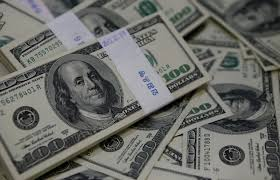The dollar rallied on Tuesday after plunging the previous day and stocks rose as Donald Trump’s return to the White House brought mixed messaging on tariffs and highlighted markets’ twitchiness about trade policy.
The Canadian dollar and Mexican peso bore the brunt of the market swings on Tuesday and Monday, after Trump said he was mulling imposing 25% tariffs on the neighbouring countries as soon as Feb. 1.
That sent the Mexican peso sliding well over 1% against the U.S. dollar while the Canadian dollar tumbled to a five-year low of $0.689, although the selloff later moderated somewhat.
Around 11 hours earlier the U.S. dollar had plunged against its peers – including the Canadian dollar and peso – after a presidential memo said the administration would probe trade issues but stop short of day-one tariffs.
U.S. stocks climbed in early trading as markets reopened after Monday’s public holiday, with the S&P 500 index up 0.47%, the Nasdaq rising 0.45% and the Dow Jones gaining 0.44%.
U.S. equities were likely reflecting relief among investors that Trump has not kicked off his second presidency with a raft of trade actions, as they reopened after a public holiday, said Jan Von Gerich, chief strategist at lender Nordea.
“We shouldn’t get too carried away by this, the fact that he didn’t start with tariffs doesn’t mean that they won’t come later,” he said. “For the global equity market, I think it’s all about Trump now.”
European shares were muted after Asia eked out small gains overnight, with investors and governments breathing a sigh of relief that Trump avoided clear moves on tariffs on the European Union and China.
Europe’s continent-wide STOXX 600 index was 0.16% higher and Germany’s DAX was up 0.08%.
The dollar index, which measures the currency against six peers, was last up 0.3% at 108.31 on Tuesday.
It had earlier risen to 108.79 although failed to make back the 1.2% it lost on Monday in its biggest daily fall since November 2023.
The euro fell 0.26% to $1.039, after jumping 1.42% a day earlier.
BOND YIELDS DIP AS CHINA HANGS ON
Many investors and foreign capitals had expected tariffs to be among the raft of executive orders Trump signed in his first day in office.
The dollar has risen around 5% since Trump won the Nov. 5 election, partly as investors have braced for wide-ranging levies that would likely hurt America’s trading partners.
U.S. 10-year Treasury yields were down 4 basis points on Tuesday at 4.57%.
They were nonetheless still up around a percentage point since the Federal Reserve started cutting rates in mid-September, reflecting a strong economy and dwindling prospects for large Fed reductions this year.



